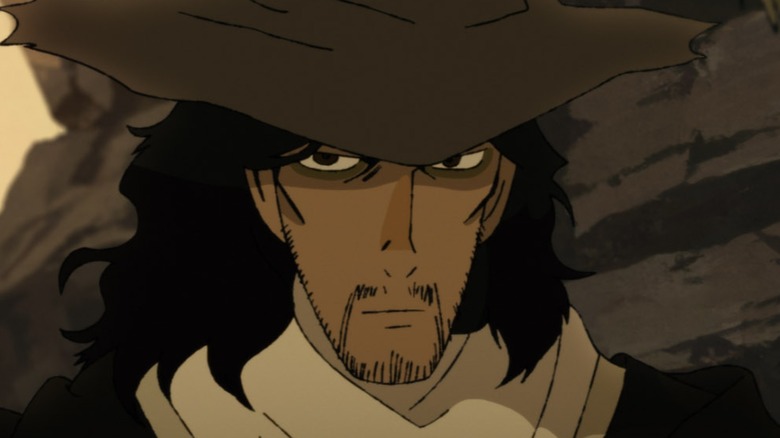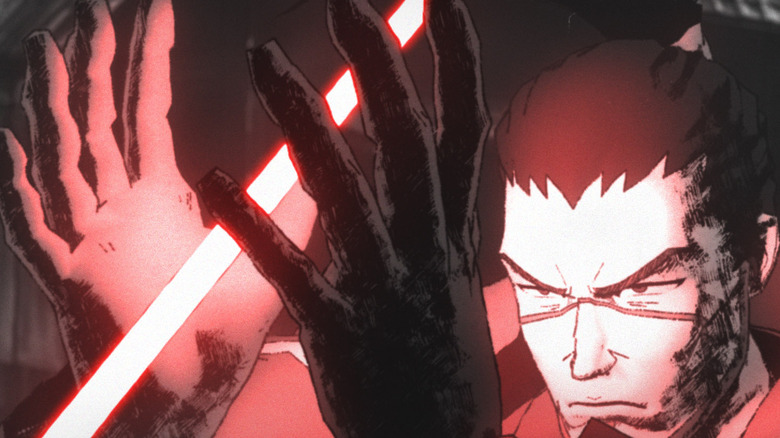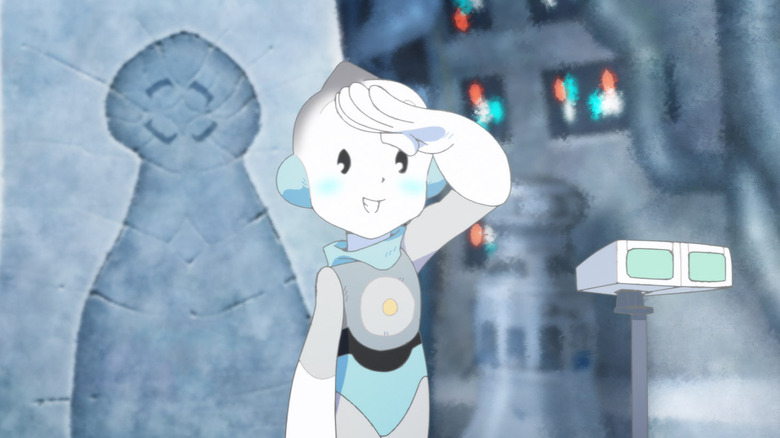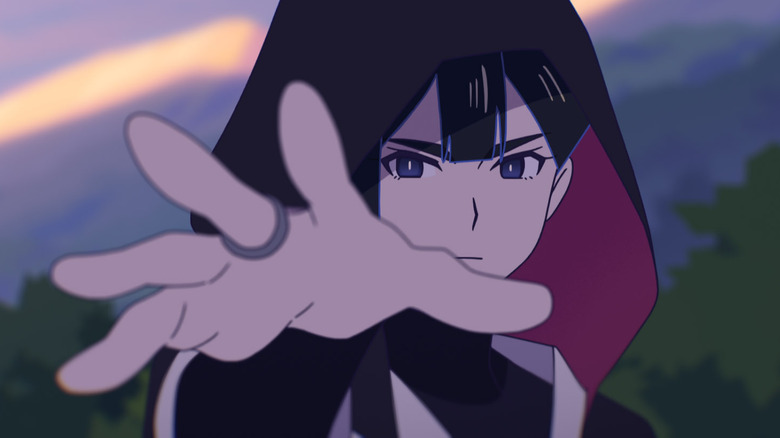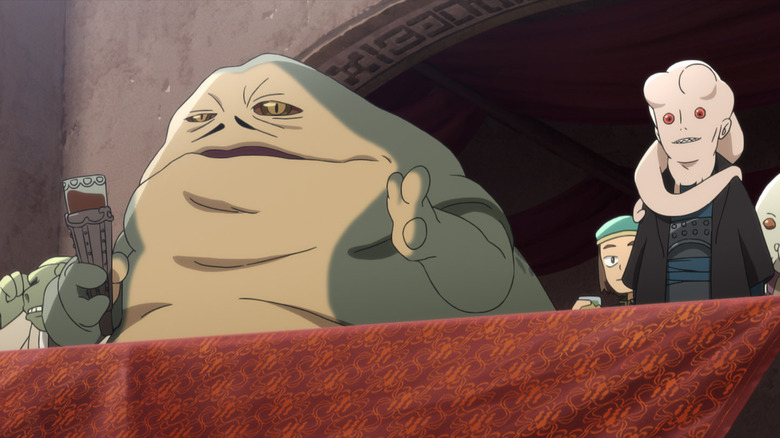Star Wars: Visions Executive Producer James Waugh And Producer Kanako Shirasaki - Exclusive Interview
"Star Wars: Visions" is one of the most creative endeavors in recent "Star Wars" history: a series of anime shorts about the galaxy far, far away. Though some of these stories feature returning favorites, many of them are completely new characters in new worlds — all in their own distinct style while maintaining that recognizable "Star Wars" flavor. The shorts were made by seven different anime companies, ranging from powerhouses like Studio I.G. to modern mainstays like Studio Trigger and up-and-coming companies like Science SARU.
Looper spoke with "Visions" executive producer James Waugh and producer Kanako Shirasaki. They told us about going full circle on the franchise's Japanese influences, getting the stellar English voice cast, and how much free rein each studio had to tell their own story. They also speculated on the live-action potential of some of the characters, including the galaxy's most prominent pop punk outfit.
Japanese cinema and Star Wars
"Star Wars" started out with a lot of influences from Japanese cinema, specifically Kurosawa. I'd say the first short "The Duel" is very clearly Kurosawa-esque. Was this a deliberate intention to bring it full circle and take "Star Wars" back to Japanese roots?
James Waugh: Yeah. I mean, absolutely. I think that's a really fascinating observation, and it's dead on. I think we're all pretty cognizant, working on "Star Wars," that so much of the vernacular and just the cinematic language of "Star Wars" is so deeply rooted in Kurosawa. But even beyond that, I mean, you could kind of go down the Jidaigeki rabbit hole and see films, like "Sword of Doom" and all sorts of films like that, that have inspired it.
So in many ways, what's been interesting about this process is when we've met with a lot of these studios, we get to hear about how "Star Wars" has inspired them to start on their artistic path, that they saw this world-building that was happening in this Western film and wanted to do that. And anime was a way to start expressing that big vision, that big imagination.
And so in many ways, you see that cycle kind of going back. We as fans have been fans of anime for a long time, so it was already sort of influencing what we were doing. So it's almost like Japanese pop culture was influencing "Star Wars" once again. Yes, it was absolutely intentional, certainly for "The Duel," which is such a love letter, I think, to both Kurosawa and George Lucas in many ways. I mean, it's a "Yojimbo"-"Seven Samurai" combination with the intricacy of "Star Wars." And I think that's a big, big part of the fact that they're such fans. Okazaki-san, who was the designer, our first call with him, the back of his screen was just filled with all the "Star Wars" memorabilia that he would take great pleasure in showing us. So yeah, I think that synergy is really clear, and it was always part of our thinking.
Instructions to studios
Kanako, I noticed a lot of the shorts, even though they are done by different studios, use a lot of the Star Wars techniques. They use a lot of the same kind of wipes, edits, cuts, musical cues, "I have a bad feeling." Was that a deliberate instruction you gave to the studios?
Kanako Shirasaki: No, we didn't. And all the creators are huge "Star Wars" fans, so they want to use these "Star Wars" best-ofs in their stories. So we didn't ask for it, like, "Oh, make sure to use, 'I have a bad feeling about this,' in your short." No, we didn't. They just include that iconic line, or some props, or ships in their shorts. Yeah. That's coming from them.
That does lead to my next question, which is when you were picking out these studios, what instructions did you give them?
Kanako Shirasaki: We gave, not the instruction, but we asked them to please tell your "Star Wars" stories. Like, if you could tell your story in the "Star Wars" galaxy, what would it be? So that was what we proposed to them originally.
James Waugh: Yeah. It was pretty thin. In all honesty, we knew we had this "Visions" framework that we had talked a lot about internally. But ultimately, what we didn't want to do is be one of those studios that goes to these amazing anime studios in Japan and says, "Here's the type of story we want you to tell. And we just are really looking for your aesthetic." We wanted to work the other way. And so we very much said, "It has to have heart. It has to be a 'Star Wars' story, but use the elements of 'Star Wars' that inspired you the most."
The obvious comparison and English voice casts
One of the most obvious points people have brought up is comparisons to "The Animatrix." Was that a deliberate influence?
James Waugh: Was it deliberate? I love "The Animatrix." I can tell you that much. And I think that the Wachowskis were ahead of their time in 1999, or whenever that came out. It's an inspirational work, with a lot of amazing talent. Was there any cognizant [feeling of] "Let's do the Animatrix?" I don't think anybody ever said that, but I think anybody who is an aficionado for great animation, especially Japanese animation, has been inspired by the work done on that.
So every time one of these shorts ends, they have the Japanese voice cast credited and the English voice cast credited. What part did either of you have in getting the English cast together?
James Waugh: We worked very closely with Lucasfilm's casting department and Disney+. The original cast is definitely the Japanese cast. It was done in that form first. And so, from an English perspective, it was very much done in the model that Kathy did, working with Miyazaki, when she partnered with him to bring those West.
We wanted to dub and have it be as authentic as possible, but also accessible to English that subtitles are a barrier. So, yeah. I mean, we were in those records. There's certain talent that we wanted to go after, and we wanted to make sure it was a really diverse and representative cast as well. And I think we've hit that, but we were really inspired by what was done in the original version.
Exciting studios and live action potential
Were there any studios you were especially excited to work with? I mean, they're all great, but were there ones you were just amazed you got?
Kanako Shirasaki: Yeah. It's like, it's a very hard question, because they're all great. Yeah. Oh, man, that's really ... It's very hard to pick.
James Waugh: They're all great.
Kanako Shirasaki: They're all great. Yeah. It's a very boring answer, but it's all great.
James Waugh: They're great in different ways. Production IG is such a legendary studio that has done so much that's inspired us. But then there's a lot of really interesting up and coming studios like Science SARU that have a huge, exciting future ahead of them. So it's like, the excitement — I think it's two degrees on our side of, like, we are excited for different reasons.
We saw Boba Fett and Bib and Jabba in one of them. And there's been a big movement in "Star Wars" in the last couple of years to get these animated characters into live action. Are there any characters in here that you would love to see or currently working towards getting in live action?
James Waugh: There is nobody that we're actively working toward. Yeah, I mean, that's one of the fun things about "Star Wars," and I get to work in a lot of different franchise spaces as well in animation. So it's kind of fun to see those moments where fans are rewarded for their fandom and investment in the franchise and get to see those characters appear in different places. So I would love to see a lot of these characters pop up. Who knows about what is possible or not? But gosh, I love that band Star Waver and that would be a lot of fun. [Laughs]
Kanako Shirasaki: Yeah, definitely. The band is great, and also I'd love to see like a Lop somewhere [laughs]. More Lop, like yeah, rabbits somewhere. But yeah, it's great to see. And I think your questions mean they really created great characters for "Visions."
"Star Wars: Visions" is now streaming on Disney+.
